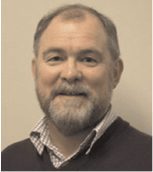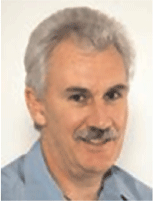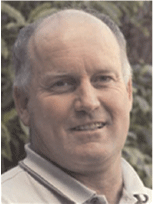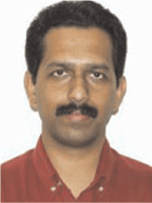Multi-scale characterisation of the Paaratte Formation, Otway Basin, for CO2 injection and storage
M. Bunch A , R. Daniel B , M. Lawrence C , G. Browne C , S. Menacherry A , T. Dance D and M. Arnot CA CO2CRC.
B Australian School of Petroleum, University of Adelaide.
C GNS Science.
D CSIRO.
The APPEA Journal 52(2) 664-664 https://doi.org/10.1071/AJ11078
Published: 2012
Abstract
A resurgent interest in the gas potential of the Gulf of Papua has been enhanced by the recent announcement of developing new LNG facilities in Port Moresby. Petroleum Geo-Services (PGS) has recently acquired a 6,000-km2 Multi-Client 3D (MC3D) survey in the gulf. Although most of the discoveries in PNG are from the highland areas, the gulf is a proven hydrocarbon province with gas/condensate accumulations previously discovered in several reef build-ups.
It is thought that sediments from the Papuan Fold Belt produced clastic dominated deltas in the Gulf area. Although this play is untested offshore, there is evidence these sandy facies exist and could contain hydrocarbons. On the first phase of acquisition/interpretation, an efficient screening workflow called Prospect Scanner, developed to highlight areas of AVO effects in large 3D seismic datasets, was tested. It uses pre-stack seismic time migrated (PSTM) gathers to extract AVO attributes that are then inverted to derive relative acoustic and shear impedance volumes. Using idealised cross-plots, the relationship between Vp/Vs ratio and the Ip values gives a good indication of the fluid and lithology of the tested interval.
The results are loaded into a conventional interpretation package for interpretation/visualisation. Prospect Scanner has highlighted previously undrilled turbidite and basin floor fan prospects in the region. The Vp/Vs versus Ip cross-plot shows clustering of the sand anomaly and good separation from the majority of the plot. These points correspond to the idealised location for a gas sand. Past concerns about lateral prediction of reservoir presence and quality associated with the basin floor fans can be addressed through this workflow.

Mark Bunch joined CO2CRC at the beginning of 2008 and is based at the Australian School of Petroleum, University of Adelaide. He holds a BSc (Hons) in geology and geophysics (BSc Hons), an MSc in hydrogeology, and a PhD in Stratigraphic forward modelling. Presently, he works in characterisation and modelling of subsurface geological systems for storage of supercritical CO2. His past research activities include detection of granulation seam material using complex resistivity, shallow groundwater flow modelling for archaeological excavations, and compiling data for mapping inundated prehistoric sub-seabed landscapes. |

Ric graduated with a BSc in sedimentary geology from Macquarie University (1970) and a PhD in cool-water carbonate sediments from the University of Adelaide (2002). He has worked with Baroid International (now part of Halliburton) as a senior drilling fluids engineer in various parts of the world. He has also worked at Flinders University and Adelaide University as a part-time lecturer and demonstrator. In 2001 Ric joined the Australian School of Petroleum (ASP)_ as a researcher for the APCRC Seals Program. He is now a senior research fellow with the CO2CRC at ASP, investigating the seal containment of potential CO2 storage sites in conjunction with CO2 wettability (contact angle and interfacial tension) and characterising the sealing facies of the Paaratte Formation for the CRC-2 injection experiments. Member: AAPG, PESA, and the Australian Quaternary Association. |

Mark Lawrence is a senior geologist with GNS Science where he works on CO2 sequestration, hydrocarbon, and geothermal projects. He has an MSc (Waikato University, NZ) and a PhD in geology (University of Canterbury, NZ). Prior to joining GNS Science, Mark undertook postdoctoral study at the University of Aberdeen in Scotland, followed by 14 years of oil industry experience with Baker Hughes in Aberdeen. His main fields of interest comprise core and borehole image data interpretation (wireline and LWD) and integration, specialising in sedimentological, geochemical, ichnofabric, and environmental analysis of fluvial-deltaic to shallow marine clastic sediments and carbonates. Member: AAPG, IAS, SEPM, and SPWLA. |

Greg Browne is a sedimentologist at GNS Science with experience working with sediments deposited in a range of environments. He has concentrated mostly on deep-water and fluvial systems and has worked in Canada, Antarctica, Korea, New Zealand, and the Otway project. For a number of years, he managed the Hydrocarbons Section at GNS Science. He holds a BA, a BSc, an MSc (hons) from the University of Auckland, and a PhD from the University of Western Ontario. |

Saju Menacherry is a reservoir quality specialist in Chevron Technology Company, Perth. He holds a BSc in geology (1989, Calicut University, India), an MSc in geology (1991, Kerala University, India), and a PhD in petroleum geology (2007, Adelaide University). In 1991, he started as a guest lecturer in sedimentology and a teaching assistant in Kerala University, India. In 1992, he joined ABN Minerals Ltd., India, as a development geologist and worked for five years. In 1997, he was employed to Whiterock Minerals Pty Ltd., India, as a senior exploration geologist. In 2000, he joined Penrice Soda Products, Adelaide as a geochemist and in 2002 was employed to Mobil Oil Australia as a Quality Assurance Chemist. In 2003, he joined as research scholar at Australian School of Petroleum. During 2006–07, Whistler Research employed him as reservoir geologist, which provided him experience in integrated reservoir quality analysis and reservoir characterisation studies for various projects. In 2008, he started as research fellow at CO2CRC (CRC for Greenhouse Gast Technologies), Adelaide University in the area of characterisation and reservoir quality analyst for CO2 sequestration. |

Tess Dance received her BSc in Earth science from Deakin University in 2000, and in 2001 completed a PGDip in geographic information systems and 3D modelling at Melbourne University. She has worked for more than eight years characterising sites for the geological storage of CO2, first with Geoscience Australia’s Petroleum and Marine division in Canberra, and now with the CSIRO in Perth. Presently, her work is focused on the Otway Basin Pilot Project—the first demonstration site of its kind in Australia. |

Malcolm Arnot has a BSc (hons) and an MSc (hons) from Victoria University of Wellington, and a PhD from the Department of Petroleum Engineering at Heriot-Watt University, Edinburgh. His research focuses on outcrop and subsurface studies of deep-water clastics. Prior to joining GNS Science, he worked as a research associate in the reservoir description and flow simulation group at Heriot-Watt University, undertaking quantitative outcrop analogue studies about shallow marine shoreface, deep-water clastic, and non-marine deposits for industry-funded consortia projects. |
References
Acharf, F., Camadro, J.M., and Mestivier, D. (2009). AutoClass@IJM: a powerful tool for Bayesian classification of heterogeneous data in biology. Nucleic Acids Research 37, W63–7.Cheeseman, P., and Stutz, J., 1996—Bayesian Classification (AutoClass): Theory and Results. In: Fayyad, U., Piatelsky-Shapiro, G., Smyth, P., and Uthurusamy, R. (eds.) Advances in Knowledge Discovery and Data Mining. Cambridge, UK: AAAI Press/MIT Press, 61–83.
Gallagher, S.J., Taylor, D., Apthorpe, M., Stilwell, J.D., Boreham, C.J., Holdgate, G.R., Wallace, M.W., and Quilty, P.G. (2005). Late Cretaceous dysoxia in a southern latitude siliciclastic succession, the Otway Basin, southeastern Australia. Palaeogeography, Palaeoclimatology, Palaeoecology 223, 317–48.
Geoscience Australia, 2011—Petroleum Geological Summary: release areas V11-1, V11-2 and T11-1 Otway Basin, Victoria/Tasmania. Offshore Petroleum Exploration Acreage Release. Canberra: DRET.
Hosue, M.A., Kohn, B.P., Farley, K.A., and Raza, A. (2002). Evaluating thermal history models for the Otway Basin, southeastern Australia, using (U-Th)/He and fission-track data from borehole apatites. Tectonophysics 349, 277–95.
McIlreath, I.A., and Morrow, D.W., 1990—Diagenesis. Newfoundland and Labrador A1B, Canada: Geological Society of Canada.
Patridge, A.D., 2011—Palynological analysis of core and cuttings samples from the Paaratte Formation in the CRC No.2 well, Otway Basin. Biostrata Pty Ltd Report 2011/01.
Witten, I.H., and Frank, E., 2005—Data Mining: Practical Machine Learning Tools and Techniques (2nd Edition). San Francisco, USA: Morgan Kaufmann.


